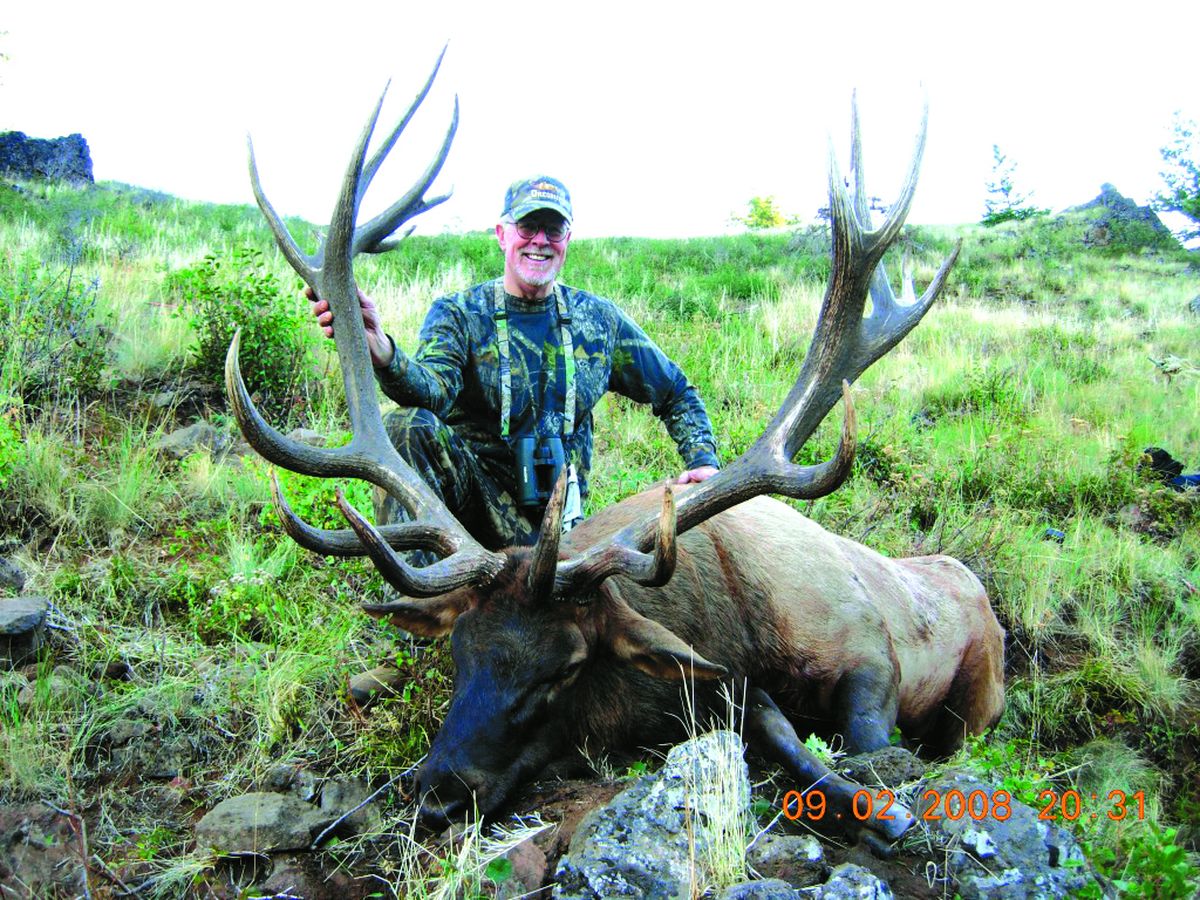Newsweek hunting article misfires
Magazine used weak arguments

The latest major main- stream shot at hunters missed the mark so wildly, I looked for a “sponsored-
by-PETA” credit line.
Last month, Newsweek magazine published a story titled “It’s survival of the weak and scrawny.” The science news piece preyed on dreadfully selective research to suggest that hunters are reversing evolution by killing off prized animals that sport the biggest antlers.
If a deer were found to be as lame as this story, even animal rights activists would want to put it down.
The article strayed from truth and reputable science by:
•Targeting sport hunters as villains while devoting only one sentence to the most viable example of overharvest promoting evolutionary losers – the impact of global commercial fishing on fish size.
•Assuming a similarity between regulated sport hunting for elk in North America and the rampant poaching that may well be the cause of smaller average tusk development in African elephants.
Managed hunting and poaching are apples and oranges. There’s simply no comparison.
•Focusing on a bighorn sheep herd on one Alberta mountain where scientists have documented a decline in horn size, suggesting the cause may be hunting pressure on the biggest rams.
The story makes no mention of wildlife management protocols in most bighorn sheep ranges that limit hunters to a small number of permits, assuring that they harvest only a percentage of the oldest rams.
•Neglecting to cite issues beyond hunting that impact big game, such as habitat destruction, pollution, development in winter ranges, wolves, noxious weeds – all of which influence nutrition, which is the No. 1 factor in antler development.
•Overlooking the glaring fact that just this season, after a century of regulated hunting seasons, sportsmen bagged not only the Washington state-record bull elk but also the world-record bull elk.
Newsweek’s story opens with quotes from Teddy Roosevelt indicating his passion for hunting big game with trophy antlers.
The magazine’s science writer considered it “remarkable” that Roosevelt was “a hunter who was also naturalist John Muir’s staunchest political ally.”
Apparently blinded by ideology and stereotype, the writer missed the correlation – Roosevelt the hunter had an equally ardent passion for preserving wildlife habitat, establishing national forests and refuges and conserving wildlife populations.
“Elk still range across parts of North America, but every hunting season brings a greater challenge to find the sought-after bull with a towering spread of antlers,” the story says.
But that’s unforgivably misleading at best, and in the story’s context, it’s blatantly false.
We have to go no farther than Washington’s Blue Mountains for a case in point.
While habitat issues, predators and clashes with encroaching agricultural lands have prevented herds from reaching the high populations of the past, the genetics for producing virile bulls with huge hat racks is clearly intact.
Big bulls for the future are assured by strict seasons, rules and quotas.
After decades of hunting pressure, the biggest bull killed in the Blues was taken just this fall.
Hunters and scientists and even science writers can rest assured that a lot of trophy DNA has been scattered around in the oats that bruiser bull sowed in the many years it eluded the arrows and bullets of hunters.
Seeing more orange: Speaking of Washington’s record bull elk: Photographs from that well-publicized September hunt have helped prompt a proposal for stricter requirements on wearing hunter orange clothing while hunting with modern firearms in Washington.
Many hunters noticed there was not a thread of fluorescent orange clothing showing in the several field photos that circulated showing Vancouver hunter Dan Agnew with his record bull and the squad of guides who helped him make history in the Blues on Sept. 2.
So did Fish and Wildlife Department enforcement agents.
Vagueness in state regulations left some gray area regarding orange clothing requirements for a modern firearm hunter with a special permit. The Governor’s Tag allowed Agnew to hunt before other modern rifle seasons were open.
To eliminate any confusion, Fish and Wildlife officials have proposed the following clarifications to the state’s hunter orange rules:
•“It is unlawful to hunt deer or elk during the modern firearm early and late general seasons in any manner unless the hunter is wearing fluorescent hunter orange clothing.”
•“All modern firearm permit holders must wear fluorescent hunter orange clothing.”
The deadline for public comment on these and other regulations proposals for 2009-2011 are due by Feb. 20.